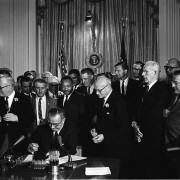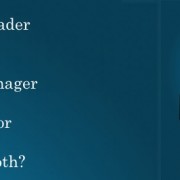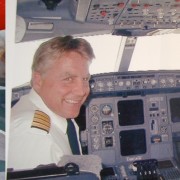6 Steps to Better Decisions
Where do we start with our decision making? Have we thought about it? Do we have time to think about it? After all a decision is demanded of us – and soon.
Identify the problem. Is there a problem? What are the threats. What is the timeline? Who and what will be impacted? In military terms we gather intelligence, identify the threats, determine axis of attack, assess environmental factors, determine the optimum ingress and egress routes and develop contingency plans. This planning process involves information gathering. Sometimes the problem is very simple – or it can be dreadfully complex.
Here is an example of 6 steps.
- Identify the objective
- Evaluate the threats
- Analyze the options
- Chose the best course of action
- Execute the decision
- Record, evaluate, debrief
These may seem like a military style list for decision-making, yet we can easily use it in our own lives and the principles still apply.
- First you need to understand what it is that the decision pertains to, i.e. your understanding of the problem and the need to make a decision. Look ahead and attempt to predict what impact will occur if no action is taken. This provides the motivation to move to the next steps.
- Intelligence gathering is the method that Militaries analyze and evaluate the threats. As we have now analysed the problem and decided that some action may be necessary, we need to gain as much ‘intel’ as possible in the context of making the best choice in our decision. Threats are not only enemy defences but can include environmental conditions, equipment and training limitations of our personnel, communication limitations or anything that can have an impact on the outcome of our actions. Time becomes an element that limits your research. However, overlooking this step is the biggest cause of failure and regret down the road. How often have we seen the consequences of poor decisions where the subject uses the feeble excuse of ‘I didn’t realize that?’
- Analysis – aah, death by analysis. It can be paralysing. In our example, we simply weigh the value of each factor. Environment, resources, risks and benefits all play into our judgement. This third step has 3 subsets.
- a. Weigh the relevant factors. This assures that we are giving appropriate priority to the elements that impact each choice.
- b. Next you need to consider how the factors that impact your decision. This includes even the lower priority factors in (a.)
- c. Finally, evaluate the benefits and risks of each choice available.
- Choose. This is often the most difficult for many. Choosing. Did you analyze correctly? Are you missing key information? Did you consult and collaborate? If you have doubts on these questions then it will be an anxious choice indeed. The less time available, the more you need to leverage your research by enlisting the help of others. We often think and behave with the philosophy that we can’t afford the time to ask others. Be careful. Is that true or are you simply afraid they may not agree with your prognosis.
- Action. It’s time to ‘shoot the puck’. You will never know whether your choice is correct until it turns into action. This will lead to a best option and finally the act of taking action on your decision. If you are still hesitant at this crucial time, I suggest that you ‘trust your gut’. I have used this many times when I have dilemmas and the analysis doesn’t provide the convincing argument. I simply lie back on a bed, with hands at my side and eyes closed. I imagine or visualize either option, and try not to argue the benefits or risks. I simply ‘feel’ the effects of each scenario. It often becomes crystal clear in a matter of seconds. (Disclaimer – It has worked for me. I make no claim you will have the same results or your decision was best with this method). That said, it is an amazing feeling to have that clarity when it happens.
- Debrief. Many people fail to take this opportunity. Post game analysis is essential to making better choices in the future. It warrants your time and effort. If you were successful, the serotonin kick your body provides you and your team is worthy of celebration. You should also capture all of the factors that helped you in that choice. If it was the wrong decision, you have just created a fabulous learning opportunity. Great leaders, inventors and creators have all failed and often. Don’t cheat yourself.
It’s OK to make a wrong choice. Guess what? We’re human! Let’s just make sure it wasn’t as a result of poor effort. The secret is to practice making decisions. That sounds strange but the impact of making deliberate decisions following these steps will make you better and better at ‘knocking them out of the park’.
Where do we start with our decision making? Have we thought about it? Do we have time to think about it? After all a decision is demanded of us – and soon.
Identify the problem. Is there a problem? What are the threats? What is the timeline? Who and what will be impacted? In military terms we may gather intelligence, identify the threats, determine axis of attack, assess environmental factors, determine the optimum ingress and egress routes and develop contingency plans. This planning process involves information gathering. Sometimes the problem is very simple – or it can be dreadfully complex.
Here is an example of 6 steps.
- Identify the objective
- Evaluate the threats
- Analyze the options
- Chose the best course of action
- Execute the decision
- Record, evaluate, debrief
These may seem like a military style list for decision-making, yet we can easily use it in our own lives and the principles still apply.
- Identify. First you need to understand what it is that the decision pertains to, i.e. your understanding of the problem and the need to make a decision. Look ahead and attempt to predict what impact will occur if no action is taken. This provides the motivation to move to the next steps.
- Evaluate. Intelligence gathering is the method that Militaries analyze and evaluate the threats. As we have now analysed the problem and decided that some action may be necessary, we need to gain as much ‘intel’ as possible in the context of making the best choice in our decision. Threats are not only enemy defences but can include environmental conditions, equipment and training limitations of our personnel, communication limitations or anything that can have an impact on the outcome of our actions. Time becomes an element that limits your research. However, overlooking this step is the biggest cause of failure and regret down the road. How often have we seen the consequences of poor decisions where the subject uses the feeble excuse of ‘I didn’t realize that?’
- Analysis – aah, death by analysis. It can be paralysing. In our example, we simply weigh the value of each factor. Environment, resources, risks and benefits all play into our judgement. This third step has 3 subsets.
- a. Weigh the relevant factors. This assures that we are giving appropriate priority to the elements that impact each choice.
- b. Next you need to consider how the factors that impact your decision. This includes even the lower priority factors in (a.)
- c. Finally, evaluate the benefits and risks of each choice available..
- Choose. This is often the most difficult for many. Choosing. Did you analyze correctly? Are you missing key information? Did you consult and collaborate? If you have doubts on these questions then it will be an anxious choice indeed. The less time available, the more you need to leverage your research by enlisting the help of others. We often think and behave with the philosophy that we can’t afford the time to ask others. Be careful. Is that true or are you simply afraid they may not agree with your prognosis.
- Action. It’s time to ‘shoot the puck’. You will never know whether your choice is correct until it turns into action. This will lead to a best option and finally the act of taking action on your decision. If you are still hesitant at this crucial time, I suggest that you ‘trust your gut’. I have used this many times when I have dilemmas and the analysis doesn’t provide the convincing argument. I simply lie back on a bed, with hands at my side and eyes closed. I imagine or visualize either option, and try not to argue the benefits or risks. I simply ‘feel’ the effects of each scenario. It often becomes crystal clear in a matter of seconds. (Disclaimer – It has worked for me. I make no claim you will have the same results or your decision was best with this method).
-
- That said, it is an amazing feeling to have that clarity when it happens.6. Debrief. Many people fail to take this opportunity. Post game analysis is essential to making better choices in the future. It warrants your time and effort. If you were successful, the serotonin kick your body provides you and your team is worthy of celebration. You should also capture all of the factors that helped you in that choice. If it was the wrong decision, you have just created a fabulous learning opportunity. Great leaders, inventors and creators have all failed and often. Don’t cheat yourself.It’s OK to make a wrong choice. Guess what? We’re human! Let’s just make sure it wasn’t as a result of poor effort. The secret is to practice making decisions. That sounds strange but the impact of making deliberate decisions following these steps will make you better and better at ‘knocking them out of the park’.










